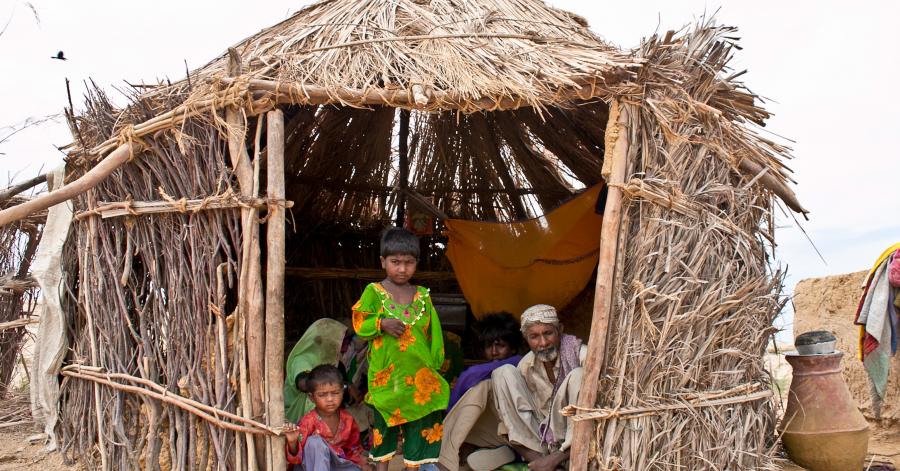
by Mir Hassan 27 June 2023
Once Nelson Mandela (Former President of South Africa) said “Overcoming Poverty is not a gesture of charity. It is an act of justice. It is the protection of a Fundamental Human Right, the Right to Dignity and a Decent Life”. Poverty refers to the state of being extremely poor or lacking the necessary resources and capabilities to meet basic human needs, such as food, shelter, clothing, and access to healthcare and education. It is a condition characterized by a lack of material possessions, financial resources, and social support networks, which often results in a diminished quality of life and limited opportunities for individuals and communities. Poverty can be both absolute and relative, with absolute poverty denoting the inability to meet basic survival needs, and relative poverty indicating a comparative disadvantage in relation to the average living standards of a particular society or community. It is a complex issue influenced by various factors, including income inequality, limited access to resources, inadequate infrastructure, social exclusion, and systemic barriers.
Pakistan has implemented various poverty alleviation policies over the years to address the challenges of widespread poverty and inequality. Some of the key poverty alleviation policies in Pakistan include: Benazir Income Support Program (BISP); Launched in 2008, BISP is one of the largest social safety net programs in Pakistan. It provides targeted cash transfers to low-income households, aiming to alleviate immediate poverty and improve human capital development. Ehsaas Program; Introduced in 2019, Ehsaas is a comprehensive poverty reduction and social protection initiative. It encompasses various programs such as income support, interest-free loans, health and education initiatives, skill development, and access to clean water and sanitation. Zakat and Usahr; Pakistan has a system of mandatory collection of Zakat (Islamic charity) from the wealth of Muslims, which is utilized for poverty alleviation programs and social welfare initiatives. Usahr is a form of agricultural taxation that contributes to poverty reduction. Microfinance and Rural Support Programs; These initiatives aim to provide financial services, including microcredit, to small entrepreneurs, farmers, and rural communities. They help create income-generating opportunities and promote entrepreneurship at the grassroots level.
Despite these efforts, Pakistan faces several challenges in its poverty alleviation endeavors. Such as: Income Inequality; High levels of income inequality exacerbate poverty in Pakistan. A significant portion of wealth and resources is concentrated in the hands of a few, limiting the opportunities for the marginalized and perpetuating the cycle of poverty. Lack of Access to Quality Education; Limited access to quality education, particularly in rural areas, hinders social mobility and perpetuates poverty. Inadequate educational infrastructure, low literacy rates, and gender disparities in education are significant challenges. Unemployment and Underemployment; Insufficient job opportunities and underemployment contribute to poverty. Many Pakistanis, especially the youth, struggle to find stable and decent-paying jobs, leading to economic vulnerability. Weak Social Protection Systems; The existing social protection systems in Pakistan face challenges in terms of targeting the most vulnerable populations effectively and ensuring the provision of adequate support to those in need. Infrastructure and Basic Services; Inadequate infrastructure, including lack of access to clean water, sanitation facilities, and healthcare services, disproportionately affects the poor and hinders their ability to improve their living conditions.
Overcoming poverty in Pakistan requires a multi-faceted approach that addresses various interconnected factors. While there is no single solution to eradicate poverty, the following measures can contribute to significant progress: Inclusive Economic Growth; Promote sustainable and inclusive economic growth that generates employment opportunities, particularly in sectors with high labor absorption potential such as agriculture, manufacturing, and services. This can be achieved through targeted investment, infrastructure development, and support for small and medium-sized enterprises (SMEs). Human Capital Development; Prioritize investment in quality education and skill development programs to enhance human capital. This includes improving access to education, reducing gender disparities, and aligning education and training programs with market needs to improve employability and income potential. Social Protection; Strengthen and expand social protection programs, such as cash transfer schemes, to provide a safety net for the most vulnerable populations. Ensure effective targeting and coverage to reach those in need, and gradually increase the benefit levels to alleviate immediate poverty and promote social mobility. Agricultural Reforms; Enhance agricultural productivity through modern farming techniques, access to credit, improved irrigation systems, and better marketing infrastructure. This can help lift rural communities out of poverty and reduce dependence on subsistence farming. Financial Inclusion; Increase access to financial services, including microfinance and mobile banking, for the poor and underserved communities. This enables them to start and expand small businesses, save, and build assets. Infrastructure Development; Invest in basic infrastructure such as roads, electricity, clean water, sanitation facilities, and healthcare centers in rural and marginalized areas. This promotes socio-economic development and improves living conditions. Women’s Empowerment; Empower women through increased access to education, skills training, and economic opportunities. Gender equality is essential for poverty reduction as empowered women contribute to household income and make informed decisions about their family’s well-being. Good Governance and Anti-corruption Measures; Improve governance and accountability at all levels to ensure effective implementation of poverty alleviation programs, transparent resource allocation, and reduced corruption. This helps to ensure that resources reach the intended beneficiaries. International Cooperation; Seek support from international organizations and donor countries to enhance technical assistance, financial aid, and knowledge sharing in poverty reduction strategies. Collaboration can bring expertise, resources, and innovative solutions to address poverty challenges effectively.
It is important to note that the implementation of these measures requires long-term commitment, coordination among stakeholders, and sustained political will. Poverty reduction is a complex and gradual process that demands a comprehensive and integrated approach to achieve meaningful and lasting change.
